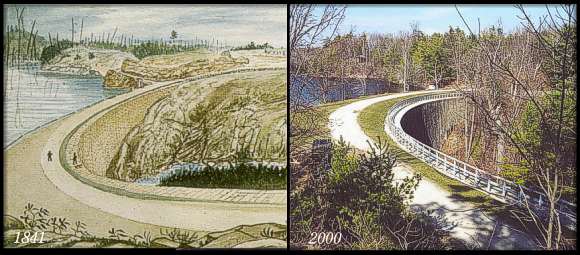Introduction
This book was written to explore a fascinating piece of Canadian history, the construction of a navigable waterway between Lake Ontario and the Ottawa River, in the middle of the Canadian wilderness, during the early part of the 19th century. Attention is paid to the actual construction of the lockstations, looking at why each spot was chosen, problems that had to be overcome, and how they did it.
This book can be enjoyed by those with a general interest in Canadian history, but it is best appreciated by actually visiting the locks. The history of the Rideau lockstations isn’t just of academic interest. The locks are still working today, for the most part just as they were 170 years ago. You can go to any of the lockstations and look around, investigate, explore. After almost two centuries of use, many changes have taken place to the surrounding landscape. But if you look hard, you can still visualize what it might have looked like when the canal was being built.
Stand on a grassy embankment and look down. It’s not a natural embankment; it’s a dam, built of rock, gravel and clay hand hewn from the ground, carried to the site by cart and wheelbarrow. It’s holding back a head of water. Look around, see why it was placed there, what its purpose was and continues to be to this day. The water from the upstream side is flowing somewhere. If not through the lock, where is it going?
The locks don't need power to operate, everything is done by hand. How does it work? How are the canal staff able to swing those massive gates, which weigh several tonnes, open and shut by hand? How are the locks filled and emptied of water?
Why is the lock there in the first place? You see tranquil water both above and below the lock. What existed here prior to the lock being built? Why was it put in this particular location?
This document answers some of these questions. For the rest, visit a lockstation. Talk to the lockstaff. Have them show you in detail how everything works. If you've come by boat, have a close look at the charts to see the layout of the waterway today.
And, while you're visiting one of the locks, if you press your ear to the stone of the lock, you can still hear, very faintly, the sound of chisels on stone and the creaking of the ropes and pulleys that lowered these massive blocks into place.

The arched dam at Jones Falls, built in 1828-1831,
as painted in 1841 and photographed in April, 2000
|